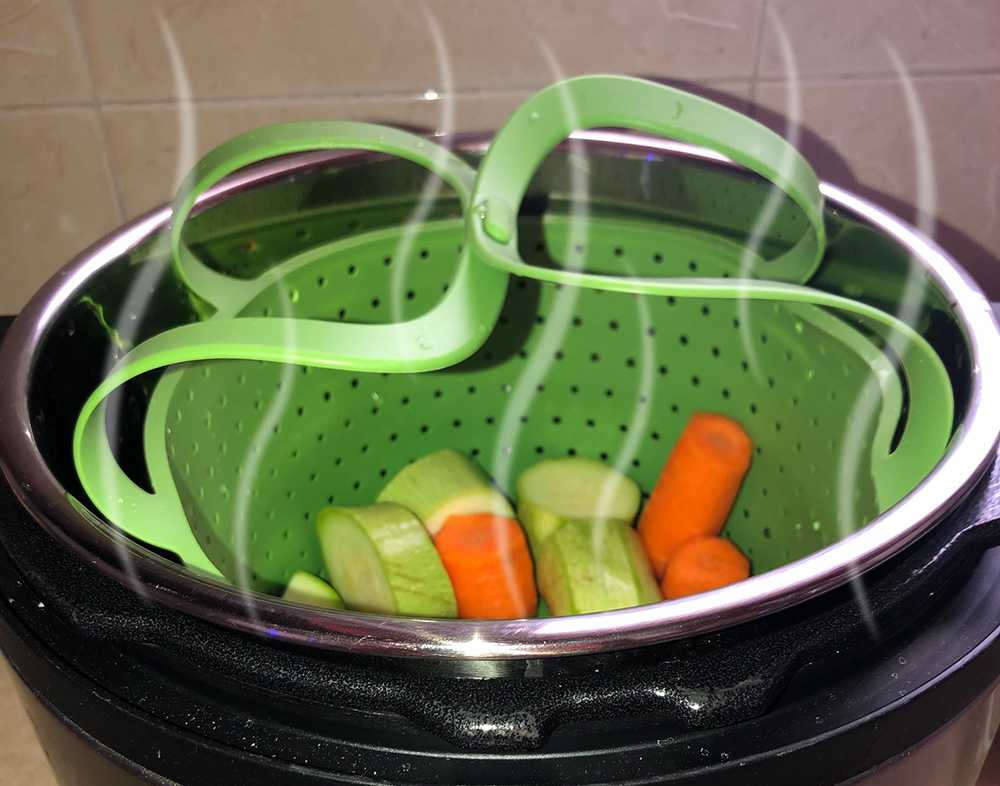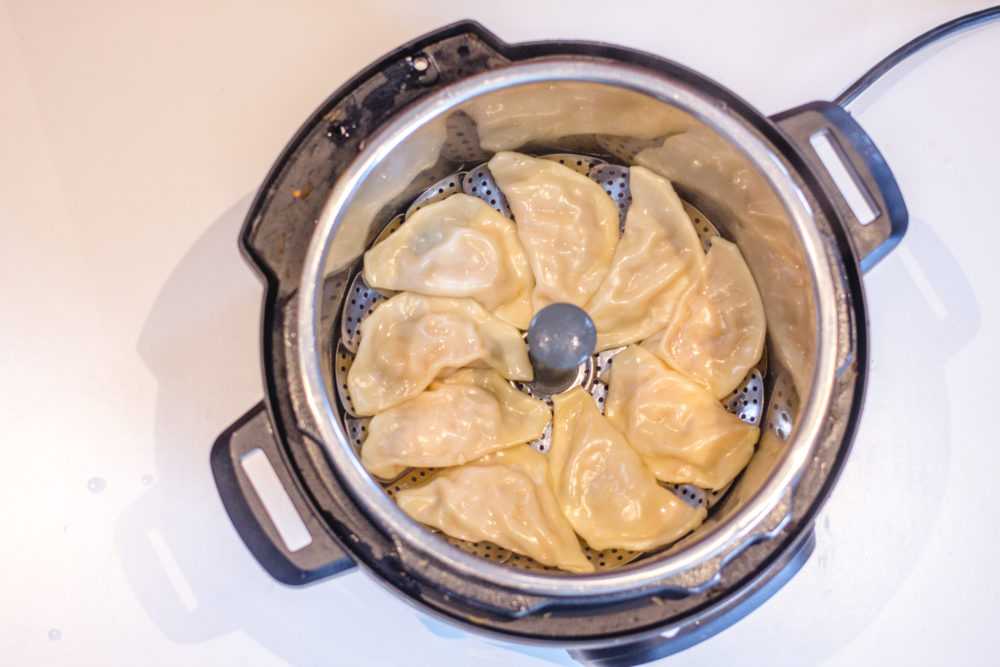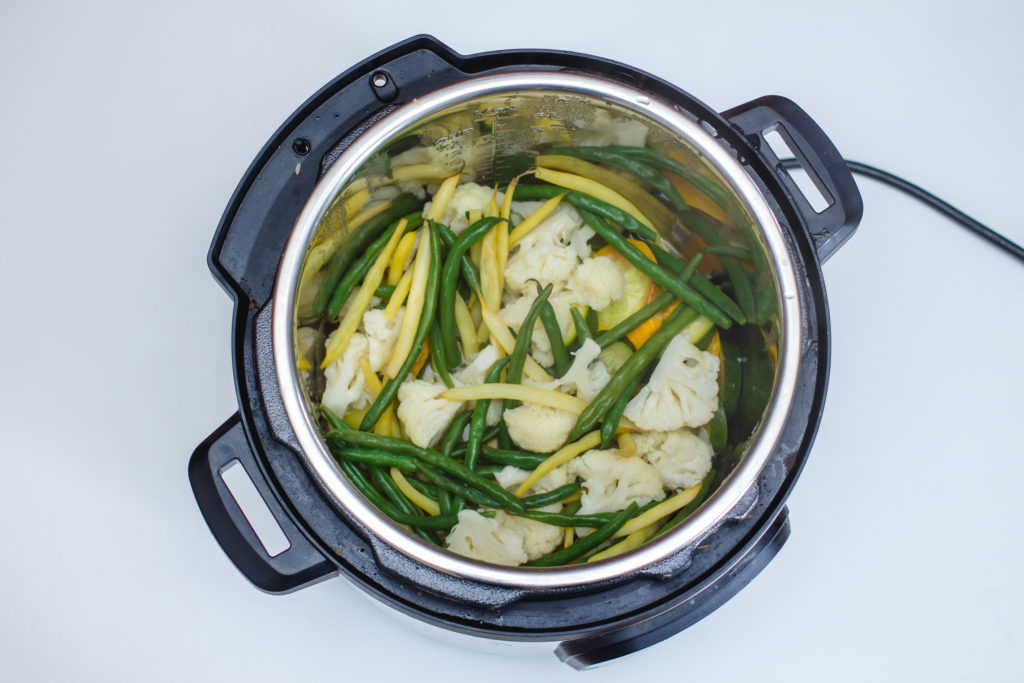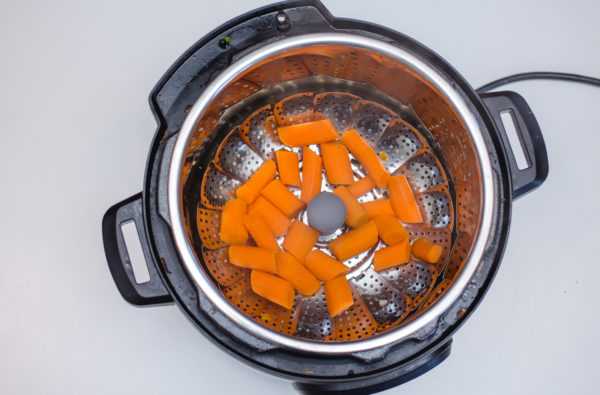I once stood in front of my Instant Pot, holding a steamer basket one hand and a handful of eggs in the other and thought to myself:
"Am I steaming these eggs or pressure cooking them? ...or am I pressure steaming them?"
This is probably a common question that many beginners have and it's probably why you are reading this page now.

To answer your question in the shortest way possible I'd say that there is a difference between presser cooking and steaming. Steaming is when you just cook your food with steam.
You can steam your food in a pressure cooker and you can pressure steam your food in the same pot so long as it's sealed up tight enough.
Let's try to understand this a bit better though, stick with me.

Table of Contents
How Pressure Steaming is Just Like Pressure Cooking
While both pressure cooking and steaming (natural or using a steamer basket) are reliable, popular alternatives to the more traditional method of cooking on a stovetop cook top or induction hob, the differences between them are well worth knowing if you want to get the most out of your experience in the kitchen!
As you may know, you can do the Instant Pot water test by setting 5 minutes of high pressure or 2 minutes of steaming. So are they really that similar?
In this article, we’ll cover some of the key distinctions between these two methods, as well as providing you with some helpful links to inspire you with recipes and ideas to bring into your kitchen.
How to Cook Perfect Vegetables With Steam
When it comes to cooking vegetables, most of the science today suggests that the old methods of simply bringing a pan to boil, chuck them in, and draining after a few minutes is incredibly wasteful. As this Healthy Eating blog explains, the longer your vegetables are submerged in water, the more the important vitamins and minerals which they contain are allowed to seep out into it. Given that you eventually discard the water, this is incredibly inefficient!
Related Reading - Does Pressure Cooking Kill Nutrients?

A Pressure Can Can Both Steam Food & Pressure Steam Your Food
One significant advantage which a pressure cooker has over a steamer is that it can be used in far more situations and with a much wider range of ingredients. This means that one appliance can take on the role previously occupied by several more specialized pieces of equipment!
Steamers, in the majority of cases, are primarily designed to help you with cooking vegetables. As mentioned above, they are extremely effective in doing so, and provide many health benefits over simply boiling on a cooktop. However, pressure cookers also provide all these benefits and more in the form of their superior versatility.
Soups, rice, various meats, and pulses: all of these and more can be cooked in a pressure cooker, whereas most consumer steamers aren’t made to handle this sort of variety.
Pressure Cooking with Steam Also Saves a Lot of Time
Perhaps the most interesting distinction between a pressure cooker and a dedicated steamer, however, is how much faster and more effective pressure cooking is than steaming food. Pressure cookers are often around ten times more efficient and faster than many other methods of cooking!
The science is simple to understand: cooking at a higher pressure means that food can be cooked at a temperature which exceeds the normal boiling point of water. The trapped steam and much lower quantity of water makes this possible, and the results are astounding.

Pressure Cooking vs Steaming: Which is Best?
There isn’t really a 'best' option, because it all depends on what you’re planning to do. However, for its versatility, massively increased speed, and the ease with which you can create entire dishes, the pressure cooker comes out in front in my book. Providing all the benefits of a steamer and then some, it’s the optimal choice for any home kitchen.
Hi. Brought a pressure king pro, so I can attempt my Christmas puddings in. Do I use a trivet and stand basin on it with water up to the trivet or how far up the basin.
I am trying to figure out if the Ninja Foodi steam option is quicker than stovetop steaming. I'm looking to make a steamed pudding. My pudding recipe calls for 3 hrs steaming on the stovetop. I know that the slow steam produces a light texture, so don't mind the length of time, but like the idea of it being automated.
Is Nija Foodi steaming faster or equal to stovetop steaming?
What if your instant pot dosent have the steam fonction.
Do you just use pressure cooking
Yes for most things you'd want to steam, pressure cooking would work just as well. And it's quicker too!
According to Nesco which has a vented steam function, the manual suggest pressure steaming vegetables. The vegetables with the least times starting at one minute follow : asparagus, shredded cabbage, sliced carrots, and sliced squash.
Are there vegetables that can’t handle the higher pressure &/or temperature of the pressure cooking function & would do better using the steam function? If so, what vegetables? I’m thinking perhaps celery, asparagus, perhaps cabbage?
According to Nesco which has a vented steam function, the manual suggest pressure steaming vegetables. The vegetables with the least times starting at one minute follow : asparagus, shredded cabbage, sliced carrots, and sliced squash.
So how much time do you save pressure steaming in the instant pot? For example, if a recipe calls for steaming for 1 hour, how many minutes do you pressure steam it in the instant pot (i.e. use steamer insert and cook on high pressure vs using steam button on the instant pot)?
According to the IP manual, the "Steam" function is under pressure: When steaming vegetables and seafood, please note that
using the “Natural Release” method for releasing steam will likely overcook the food.
This is not true for all pressure cookers.